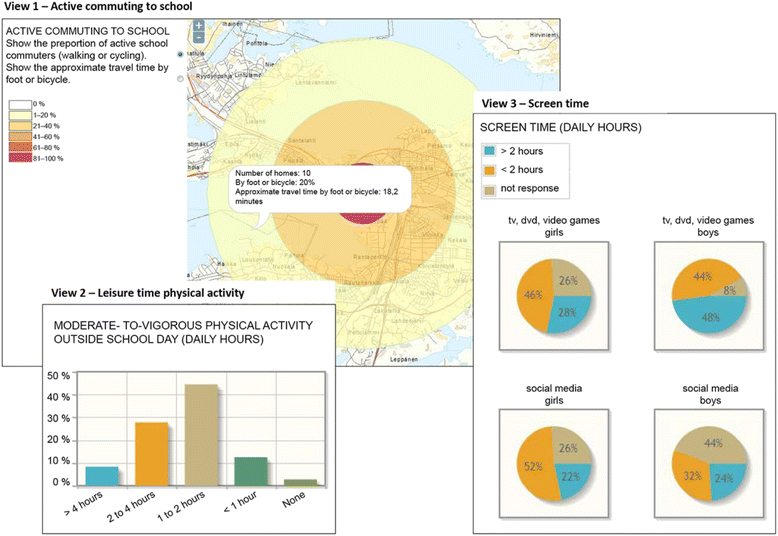KIDS OUT! Protocol of a brief school-based intervention to promote physical activity and to reduce screen time in a sub-cohort of Finnish eighth graders
- PMID: 26160058
- PMCID: PMC4702359
- DOI: 10.1186/s12889-015-2007-8
KIDS OUT! Protocol of a brief school-based intervention to promote physical activity and to reduce screen time in a sub-cohort of Finnish eighth graders
Abstract
Background: Adolescents' physical activity (PA) is decreasing and sedentary behavior (SB) increasing alarmingly. Insufficient PA and excessive SB are both related to various health risks indicating that interventions to promote adolescents' PA and to reduce their SB are needed. Schools have a great potential to reach most adolescents, and in Finland health education (HE) as stand-alone subject provides an excellent platform for health promotion. This paper describes the protocol and evaluation (RE-AIM) of an intervention developed for three HE lessons to increase PA and reduce SB during leisure among 8(th) graders.
Methods/design: All city-owned secondary schools in Tampere (n = 14) were invited to the study and were randomized in pairs to intervention (n = 7) and comparison group (n = 7). A specific content on PA and SB based on Health Action Process Approach model was integrated into routinely scheduled three HE lessons with the help of educational material: SoftGIS-questionnaire followed by feedback views on adolescents' current PA and SB, FeetEnergy-homework leaflet for adolescents, FeetEnergy-video in YouTube, FeetEnergy-poster for classroom and FeetEnergy-leaflet for parents. In the comparison group standard HE lessons were held. The primary indicators of Effectiveness are changes in PA and SB and in their psychosocial factors as well as in parental interference with PA and SB. The measurement points are baseline, 4 weeks after the intervention and 7 months from baseline, the last indicating also the measurement point for individual level Maintenance. The measures are accelerometers, 7-day activity diaries and questionnaires. The evaluation of Reach, Adoption and Implementation is based on the data collected during the intervention. Maintenance at organizational level is assessed two years after the intervention with a questionnaire to the HE teachers. The intervention was implemented in 2012 and the last measurements to assess organizational Maintenance were conducted in the end of 2014. A detailed description of the protocol and evaluation is provided to enable replication and better understanding of the findings, which will be reported in 2015.
Discussion: The findings will add our current knowledge about the feasibility and effectiveness of integrating simple structured elements into the HE lessons to increase PA and reduce SB in adolescents.
Trial registration: NCT01633918 (June 27th, 2012).
Figures
References
-
- Physical Activity Guidelines Advisory Committee. Physical Activity Guidelines Advisory Committee Report, 2008. Washington, DC: U.S. Department of Health and Human Services; 2008. www.health.gov/paguidelines/
Publication types
MeSH terms
Associated data
LinkOut - more resources
Full Text Sources
Other Literature Sources
Medical




